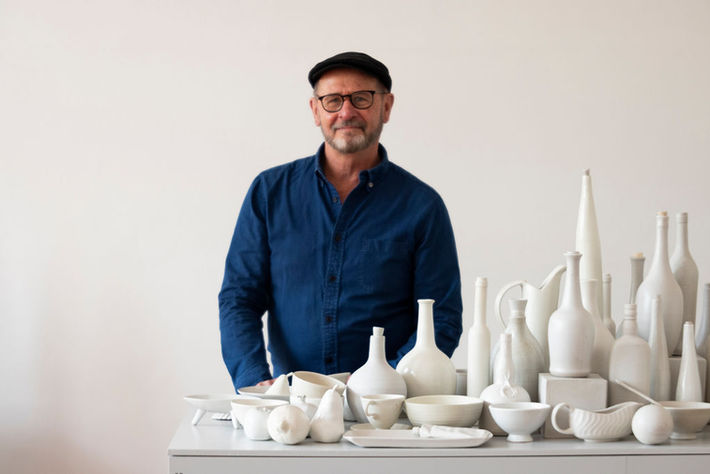Bernard Kerr
Location
About
Bernard Kerr is a highly regarded Western Australian ceramic artist and educator whose career spans decades of artistic exploration and teaching. With a Master of Arts (Visual Arts) from Curtin University and extensive experience in arts education, Kerr has played a pivotal role in shaping the ceramics landscape in Australia. He is currently the President of the Ceramic Arts Association of Western Australia, a position he has held since 2021.
Kerr’s work is deeply rooted in materiality, colour, and form, with exhibitions showcasing his innovative approach to ceramics and painting. His solo exhibitions, including Flux at Heathcote Gallery and Lexicon at Gallows Gallery, highlight his ability to push the boundaries of ceramic expression. He has also been featured in numerous group exhibitions, such as The Language of Colour at Mundaring Arts Centre and Pottery Expo Warrandyte in Victoria.
His works are held in esteemed collections, including Scotch College, the WA Chamber of Commerce, and Mundaring Shire. A recipient of several accolades, Kerr continues to contribute to the ceramics community through exhibitions, mentorship, and advocacy. His practice embodies a dedication to craftsmanship, storytelling, and the evolving dialogue between tradition and contemporary ceramic art.
Artist Statement
The nature of aesthetics in the ceramic field has changed. Diversity and pluralism are the norm. It is as if the river that was formerly a fairly confined craft based field of ceramics has fanned out as it meets the sea of the art world and formed a series of unnavigable tributaries in the delta of confusion that characterizes the contemporary world.
Challenging assumptions about what was once considered “good” in the field of ceramics,some “ugly” ceramics appear to be a manifestation in craft based contemporary art that parallel developments in the fine arts.
The term ‘maximalist’ or ‘maximalism’ has been used in order to describe the style of work that rejects refined craft skills and the pared down quest for simplicity and naturalism evident in the minimalist modernist aesthetic. Whilst ceramics has experienced excursions into abstract expressionism and a humourous Pop sensibility with such movements as Vouko’s expressionism and West Coast Funk, this new contemporary work in ceramics is characterized by unsettling subject matter, warped forms and figures and clashing, unnatural colors that seem to signify a sense of disquiet, disturbance and anxiety.
Such works are more concerned with aesthetic provocation, a rejection of skill and a response to ugliness rather than beauty. They explore societies’ complex relationship with beauty, taste and refinement and perceived illusions of purity and status associated with a conservative privileged, and by implication, classical ideal of what is attractive.
It is as if the aesthetics of taste has become inverted and elegance.
As Ayanna Dozier noted in a recent article about contemporary painting, but nevertheless relevant to contemporary ceramic practice in Artsy quoting curator Dean Kissick:”There is something comforting, therefore, about an ugly work—it can speak more honestly about how we’re feeling and the time period we’re living in. It’s a weird time. We’re surrounded by ugly and tasteless aesthetics.” If an artist’s work is a reflection of their experiences in the world, inevitably, the work’s aesthetics will match that reality. Simply put, we live in ugly times. Ugly works can offer us a way to confront this ugliness and find beauty in it.”
Is this true and is this the future for the field of ceramics?






